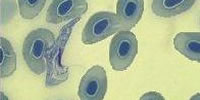Borreliosis (Lyme disease) and other tick-borne diseases
Ticks in the United Kingdom can carry a number of infections which cause disease in both humans and animals. If left untreated, many of these infections can result in severe and debilitating symptoms. Early recognition of infection is most likely to occur if a patient is aware of the presence of disease, and can recognise the symptoms. Clinicians and other healthcare professionals should be aware that many people diagnosed with tick-borne infections do not recall a tick bite. They should also be aware that infected ticks can be present in town parks and gardens. Therefore a patient does not have to visit an area considered to be high risk to contract a tick-borne disease. Follow the links below for information on specific diseases. In certain circumstances, doctors, employers, and the armed forces are required to report cases of these infections. Please see our “Disease Notification“ section for detailed information.
Please click on each heading for more information
TBE and Louping ill
There are over 53 types of virus carried by certain tick species. TBE and the Louping ill virus are closely related.
Anaplasmosis and Ehrlichiosis
Anaplasmosis and Ehrlichiosis are rickettsial infections that can be acquired from an infective tick bite and through other modes of transmission.
Borreliosis (Lyme disease)
Borreliosis (Lyme disease) is the most common tick-borne disease in the UK. Find out how to recognise infection in yourself and others.
Bartonellosis
Bartonella is carried by ticks and many animal species including domestic cats and dogs
Rickettsia
Of concern when travelling to countries such as Brazil.













